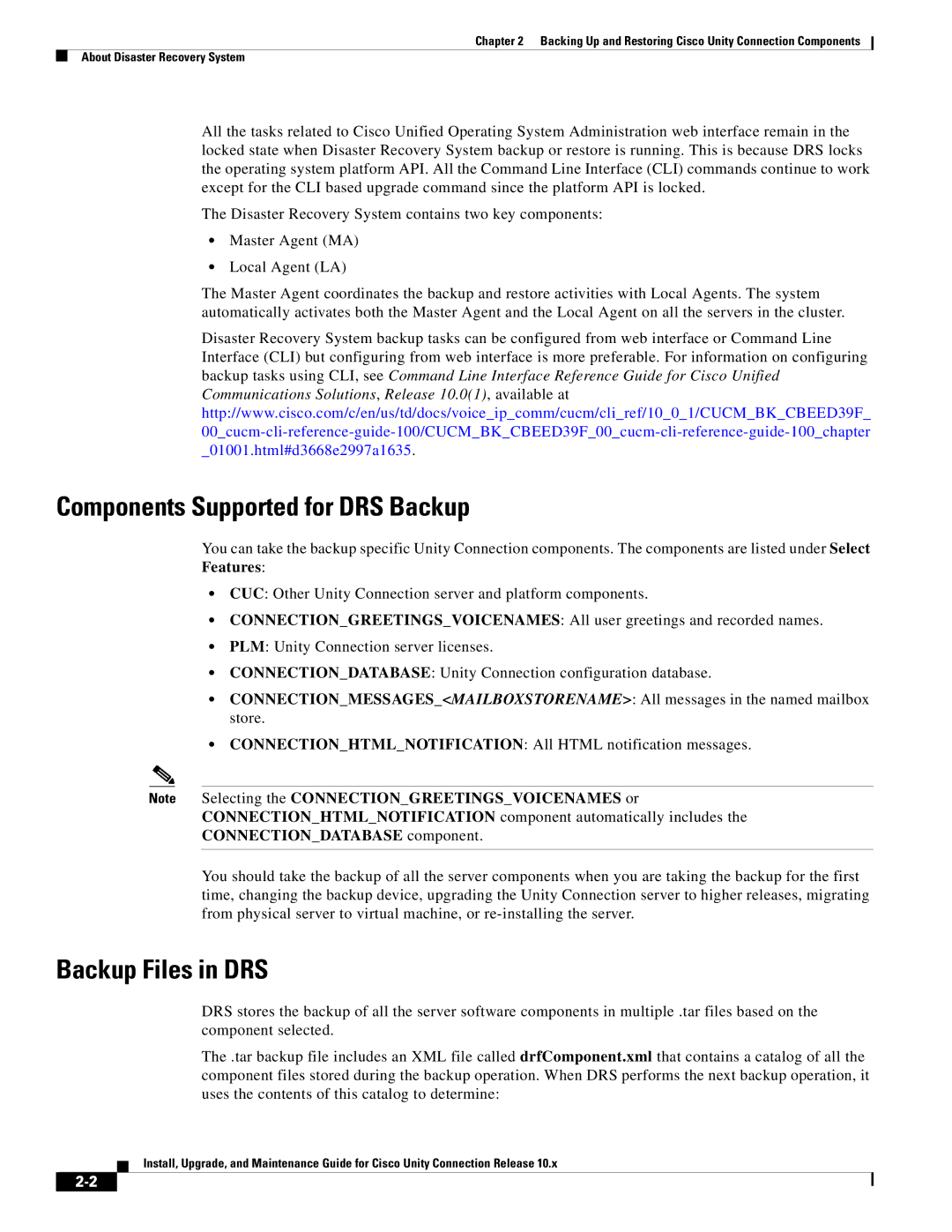
Chapter 2 Backing Up and Restoring Cisco Unity Connection Components
About Disaster Recovery System
All the tasks related to Cisco Unified Operating System Administration web interface remain in the locked state when Disaster Recovery System backup or restore is running. This is because DRS locks the operating system platform API. All the Command Line Interface (CLI) commands continue to work except for the CLI based upgrade command since the platform API is locked.
The Disaster Recovery System contains two key components:
•Master Agent (MA)
•Local Agent (LA)
The Master Agent coordinates the backup and restore activities with Local Agents. The system automatically activates both the Master Agent and the Local Agent on all the servers in the cluster.
Disaster Recovery System backup tasks can be configured from web interface or Command Line Interface (CLI) but configuring from web interface is more preferable. For information on configuring backup tasks using CLI, see Command Line Interface Reference Guide for Cisco Unified Communications Solutions, Release 10.0(1), available at http://www.cisco.com/c/en/us/td/docs/voice_ip_comm/cucm/cli_ref/10_0_1/CUCM_BK_CBEED39F_
Components Supported for DRS Backup
You can take the backup specific Unity Connection components. The components are listed under Select Features:
•CUC: Other Unity Connection server and platform components.
•CONNECTION_GREETINGS_VOICENAMES: All user greetings and recorded names.
•PLM: Unity Connection server licenses.
•CONNECTION_DATABASE: Unity Connection configuration database.
•CONNECTION_MESSAGES_<MAILBOXSTORENAME>: All messages in the named mailbox store.
•CONNECTION_HTML_NOTIFICATION: All HTML notification messages.
Note Selecting the CONNECTION_GREETINGS_VOICENAMES or
CONNECTION_HTML_NOTIFICATION component automatically includes the
CONNECTION_DATABASE component.
You should take the backup of all the server components when you are taking the backup for the first time, changing the backup device, upgrading the Unity Connection server to higher releases, migrating from physical server to virtual machine, or
Backup Files in DRS
DRS stores the backup of all the server software components in multiple .tar files based on the component selected.
The .tar backup file includes an XML file called drfComponent.xml that contains a catalog of all the component files stored during the backup operation. When DRS performs the next backup operation, it uses the contents of this catalog to determine:
Install, Upgrade, and Maintenance Guide for Cisco Unity Connection Release 10.x
